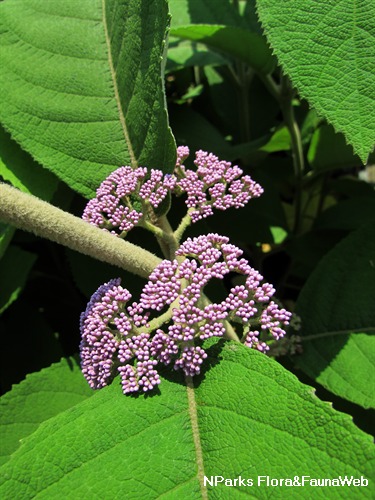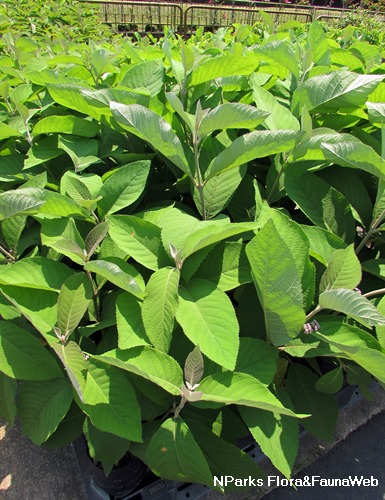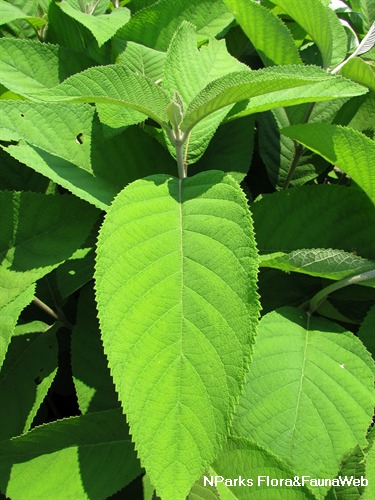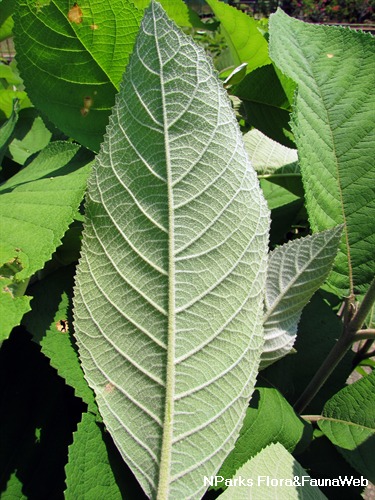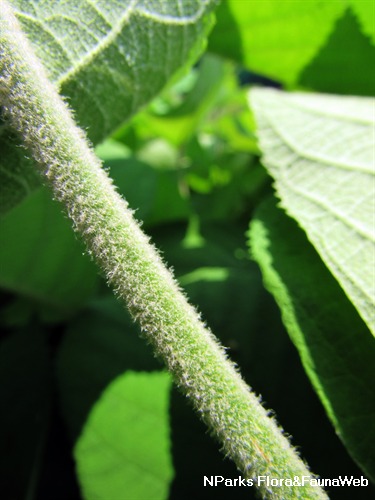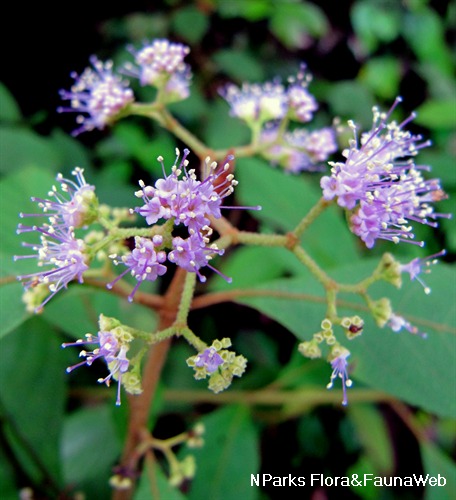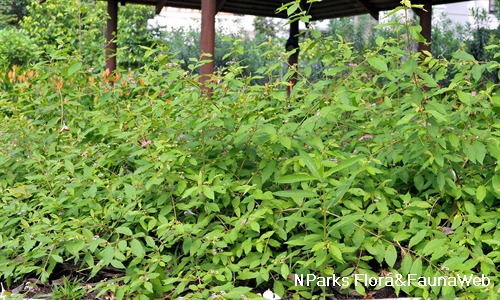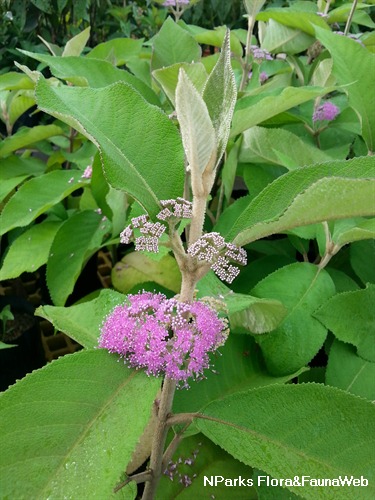
Name
Classifications and Characteristics
| Plant Division | Angiosperms (Flowering Seed Plants) (Dicotyledon) |
|---|---|
| Plant Growth Form | Shrub |
| Lifespan (in Singapore) | Perennial |
| Mode of Nutrition | Autotrophic |
| Maximum Height | 3 m to 4 m |
Biogeography
| Native Distribution | Asia |
|---|---|
| Native Habitat | Terrestrial |
| Preferred Climate Zone | Tropical, Sub-Tropical / Monsoonal |
| Local Conservation Status | Non-native (Horticultural / Cultivated Only) |
Description and Ethnobotany
| Growth Form | Large shrub or small tree up to 4 m tall. |
|---|---|
| Foliage | Leaves are ovate-elliptic to lanceolate (12-22 cm long, 4-7 cm wide). The upper surface is hairless, while the lower surface is covered in grey to grey-brown, matted hairs. |
| Stems | Round stems are densely covered in long, white hairs. |
| Flowers | Pink to purple flowers are arranged in a flat-topped inflorescence known as a cyme (8-13 cm wide). |
| Fruit | Small fruits are 2 mm wide. |
| Etymology | The genus Callicarpa is derived from the Greek words 'kalli' meaning beautiful and 'karpos' meaning fruit. Species nudiflora means with fully exposed or naked flowers. |
| Ethnobotanical Uses | Medicinal: The shoots contain anti-cancer compounds (Mei et al 2010) and antioxidants (Luo et al 2014). |
Plant Care and Propagation
| Light Preference | Full Sun |
|---|---|
| Water Preference | Moderate Water |
| Plant Growth Rate | Moderate |
Foliar
| Foliage Retention | Deciduous |
|---|---|
| Mature Foliage Colour(s) | Green |
| Mature Foliage Texture(s) | Velvety / Furry / Tomentose |
| Foliar Type | Simple / Unifoliate |
| Foliar Attachment to Stem | Petiolate |
| Foliar Shape(s) | Non-Palm Foliage (Ovate, Lanceolate, Elliptical) |
| Foliar Venation | Pinnate / Net |
| Foliar Margin | Serrate / Toothed |
Floral (Angiosperm)
| Flower & Plant Sexuality | Bisexual Flowers |
| Flower Colour(s) | Pink, Purple |
|---|---|
| Flower Grouping | Cluster / Inflorescence |
| Inflorescence Type | Cyme |
Image Repository
Others
| Master ID | 32266 |
|---|---|
| Species ID | 6674 |
| Flora Disclaimer | The information in this website has been compiled from reliable sources, such as reference works on medicinal plants. It is not a substitute for medical advice or treatment and NParks does not purport to provide any medical advice. Readers should always consult his/her physician before using or consuming a plant for medicinal purposes. |

